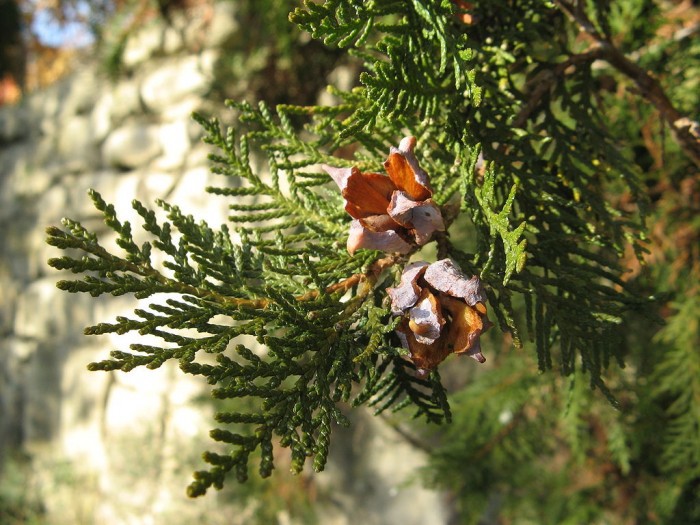Platycladus is a distinct genus of evergreen coniferous trees in the cypress family, Cupressaceae, containing only one species, Platycladus orientalis, also known as Chinese arborvitae, biota or oriental thuja. It is endemic to northwestern China. It is also now naturalized as an introduced species elsewhere in Asia: eastward to Korea and Japan; southward to northern India; and westward to northern Iran.
Although generally accepted as the only member of its genus, it has been suggested that the closely related species Microbiota decussata could be included in Platycladus, but this is not widely followed. Other fairly close relatives are Juniperus and Cupressus, both of these genera being graft-compatible with Platycladus. In older texts, Platycladus was often included in Thuja, which is reflected in one of its common names, "oriental thuja". But it is only distantly related to the genus Thuja. Differences include its distinct cones, wingless seeds, and its almost scentless foliage.
The binomial Platycladus means "with broad or flattened shoots". The qualifier orientalis refers to its native habitat in east Asia, the former Orient.

The common name 'arborvitae' is from Latin, 'tree of life', and is based on its association with long life and vitality in Buddhist thought in China. This is probably based on the tree's unchanging evergreen nature in the cold dry climate of northwest China, and its longevity; some of the larger specimens planted around Buddhist temples in China are said to be in excess of 1,000 years old. It is called ce bai in Chinese.
Description. Oriental arborvitae is evergreen coniferous genus of small, slow-growing trees which grow to mature heights of 50 to 65 feet (15 - 20 m) tall with a 1.5 foot (0.5 m) wide trunk diameter at breast height (exceptionally to 100 feet (30 m) tall and 6 feet (2 m) in diameter in very old trees). The foliage forms in flat sprays with scale-like leaves 0.08 to 0.16 inch (2 - 4 mm) long. The cones are 0.6 to 1 inch (15 - 25 mm) long, green ripening brown roughly eight months after pollination. They have 6-12 thick scales arranged in opposing pairs. The seeds are 0.16 to 0.24 inch (4 - 6 mm) long, with no wing.
It is used as an ornamental tree, both in its homeland, where it is associated with long life and vitality, and very widely elsewhere in temperate climates. Hundreds of cultivars are known to the nursery trade, of which 'Aurea Nana' and 'Elegantissima' have gained the Royal Horticultural Society's Award of Garden Merit.
The wood is used in Buddhist temples, both for construction work, and chipped, for incense burning.